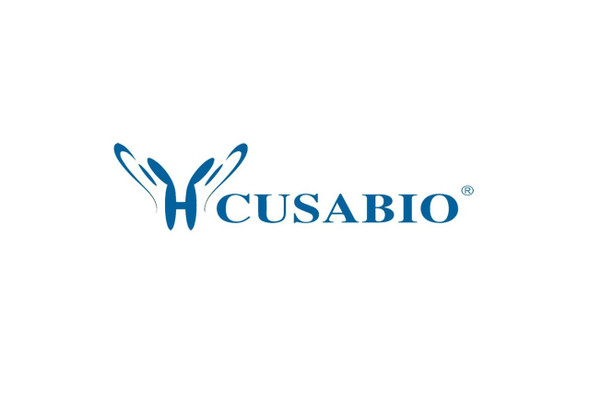Cusabio Human Recombinants
Recombinant Human Polypyrimidine tract-binding protein 1 (PTBP1) | CSB-MP018948HU
- SKU:
- CSB-MP018948HU
- Availability:
- 18 - 28 Working Days
Description
Recombinant Human Polypyrimidine tract-binding protein 1 (PTBP1) | CSB-MP018948HU | Cusabio
Alternative Name(s): 57 kDa RNA-binding protein PPTB-1 (Heterogeneous nuclear ribonucleoprotein I) (hnRNP I) (PTB) (PTB)
Gene Names: PTBP1
Research Areas: Epigenetics and Nuclear Signaling
Organism: Homo sapiens (Human)
AA Sequence: MDGIVPDIAVGTKRGSDELFSTCVTNGPFIMSSNSASAANGNDSKKFKGDSRSAGVPSRVIHIRKLPIDVTEGEVISLGLPFGKVTNLLMLKGKNQAFIEMNTEEAANTMVNYYTSVTPVLRGQPIYIQFSNHKELKTDSSPNQARAQAALQAVNSVQSGNLALAASAAAVDAGMAMAGQSPVLRIIVENLFYPVTLDVLHQIFSKFGTVLKIITFTKNNQFQALLQYADPVSAQHAKLSLDGQNIYNACCTLRIDFSKLTSLNVKYNNDKSRDYTRPDLPSGDSQPSLDQTMAAAFGAPGIISASPYAGAGFPPTFAIPQAAGLSVPNVHGALAPLAIPSAAAAAAAAGRIAIPGLAGAGNSVLLVSNLNPERVTPQSLFILFGVYGDVQRVKILFNKKENALVQMADGNQAQLAMSHLNGHKLHGKPIRITLSKHQNVQLPREGQEDQGLTKDYGNSPLHRFKKPGSKNFQNIFPPSATLHLSNIPPSVSEEDLKVLFSSNGGVVKGFKFFQKDRKMALIQMGSVEEAVQALIDLHNHDLGENHHLRVSFSKSTI
Source: Mammalian cell
Tag Info: N-terminal 10xHis-tagged
Expression Region: 1-557aa
Sequence Info: Full Length of Isoform 3
MW: 63.1 kDa
Purity: Greater than 85% as determined by SDS-PAGE.
Relevance: Plays a role in pre-mRNA splicing and in the regulation of alternative splicing events. Activates exon skipping of its own pre-mRNA during muscle cell differentiation. Binds to the polypyrimidine tract of introns. May promote RNA looping when bound to two separate polypyrimidine tracts in the same pre-mRNA. May promote the binding of U2 snRNP to pre-mRNA. Cooperates with RAVER1 to modulate switching between mutually exclusive exons during maturation of the TPM1 pre-mRNA. Represses the splicing of MAPT/Tau exon 10. In case of infection by picornaviruses, binds to the viral internal ribosome entry site and stimulates the IRES-mediated translation.
Reference: "Quantitative phosphoproteomics reveals widespread full phosphorylation site occupancy during mitosis." Olsen J.V., Vermeulen M., Santamaria A., Kumar C., Miller M.L., Jensen L.J., Gnad F., Cox J., Jensen T.S., Nigg E.A., Brunak S., Mann M. Sci. Signal. 3:RA3-RA3(2010)
Storage: The shelf life is related to many factors, storage state, buffer ingredients, storage temperature and the stability of the protein itself. Generally, the shelf life of liquid form is 6 months at -20?/-80?. The shelf life of lyophilized form is 12 months at -20?/-80?.
Notes: Repeated freezing and thawing is not recommended. Store working aliquots at 4? for up to one week.
Function: Plays a role in pre-mRNA splicing and in the regulation of alternative splicing events. Activates exon skipping of its own pre-mRNA during muscle cell differentiation. Binds to the polypyrimidine tract of introns. May promote RNA looping when bound to two separate polypyrimidine tracts in the same pre-mRNA. May promote the binding of U2 snRNP to pre-mRNA. Cooperates with RAVER1 to modulate switching between mutually exclusive exons during maturation of the TPM1 pre-mRNA. Represses the splicing of MAPT/Tau exon 10
Involvement in disease:
Subcellular Location: Nucleus
Protein Families:
Tissue Specificity:
Paythway:
Form: Liquid or Lyophilized powder
Buffer: If the delivery form is liquid, the default storage buffer is Tris/PBS-based buffer, 5%-50% glycerol. If the delivery form is lyophilized powder, the buffer before lyophilization is Tris/PBS-based buffer, 6% Trehalose, pH 8.0.
Reconstitution: We recommend that this vial be briefly centrifuged prior to opening to bring the contents to the bottom. Please reconstitute protein in deionized sterile water to a concentration of 0.1-1.0 mg/mL.We recommend to add 5-50% of glycerol (final concentration) and aliquot for long-term storage at -20?/-80?. Our default final concentration of glycerol is 50%. Customers could use it as reference.
Uniprot ID: P26599
HGNC Database Link: HGNC
UniGene Database Link: UniGene
KEGG Database Link: KEGG
STRING Database Link: STRING
OMIM Database Link: OMIM









